Berbere (Ethiopian Spice Blend)
This post may contain affiliate links. See my disclosure policy.
Central to Ethiopian cuisine is Berbere, a fiery hot and fragrant spice blend bursting with flavor. Now you can make your own right at home with my authentic berbere recipe that will bring life, flavor, and some serious kick to your food!
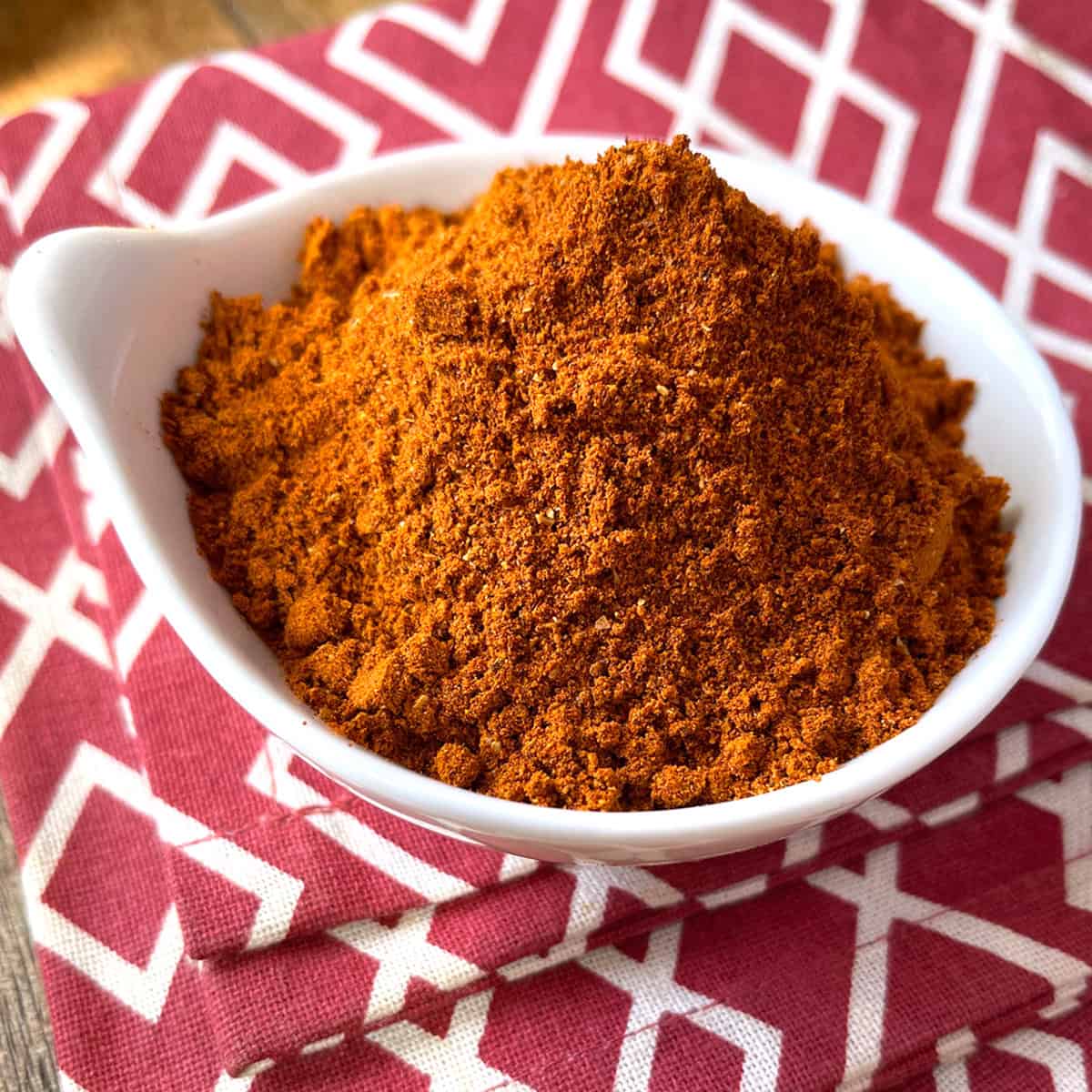
What is Berbere?
Berbere is a bold and fragrant spice blend known for its deep red color and complex flavor and is an integral ingredient in Ethiopian cuisine, most notably Doro Wat, the famous spicy chicken stew. It’s also known for its potent heat and this spice is not for the faint of heart – or taste buds. Every Ethiopian cook has their own version of this blend. Some versions include lesser known spices like nigella seeds, ajwain, and korarima, a spice that grows wild in Ethiopia. Whatever the version, there are several key spices that are common to all and the result is a fiery, bright red, highly aromatic and flavorful seasoning blend. It’s fantastic as a rub for meat, poultry and fish, a seasoning for stews, soups, grains and vegetables (see below for recommendations). Berbere makes a wonderful all-purpose seasoning.
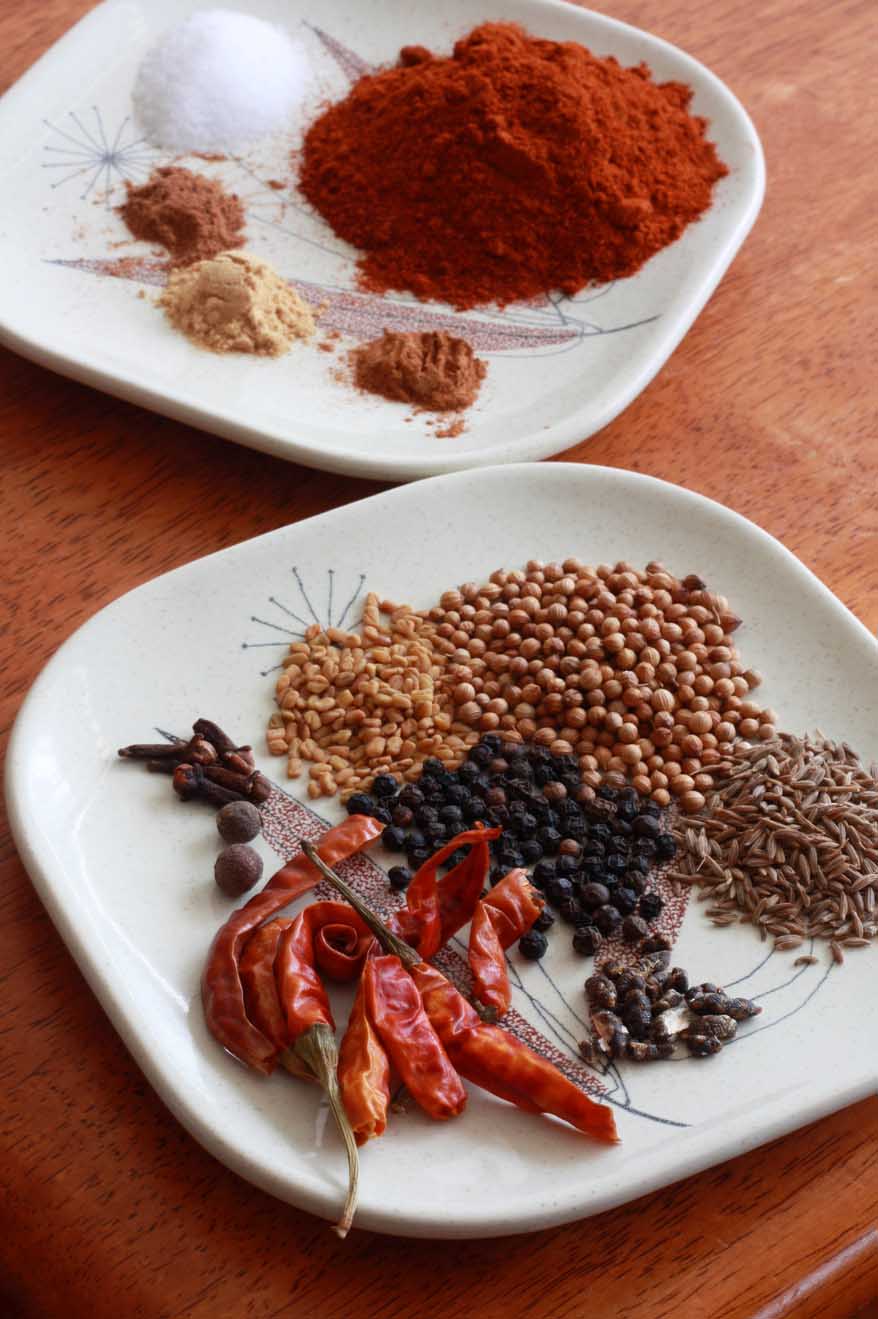
Berbere Ingredients
Berbere is made up of several spices and I strongly recommend using whole spices wherever and whenever possible. The whole spices are toasted, cooled and ground, yielding maximum flavor. If you already have these spices in ground form and don’t want to purchase the whole spices, you can substitute pre-ground. To make berbere you’ll need a combination of pre-ground spices and whole spices that you’ll toast and grind.
For the whole spices you will need:
- Coriander Seeds
- Cumin Seeds
- Green Cardamom Seeds
- Dried Red Chili Peppers
- Whole Allspice Berries
- Whole Cloves
- Fenugreek Seeds
- Black Peppercorns
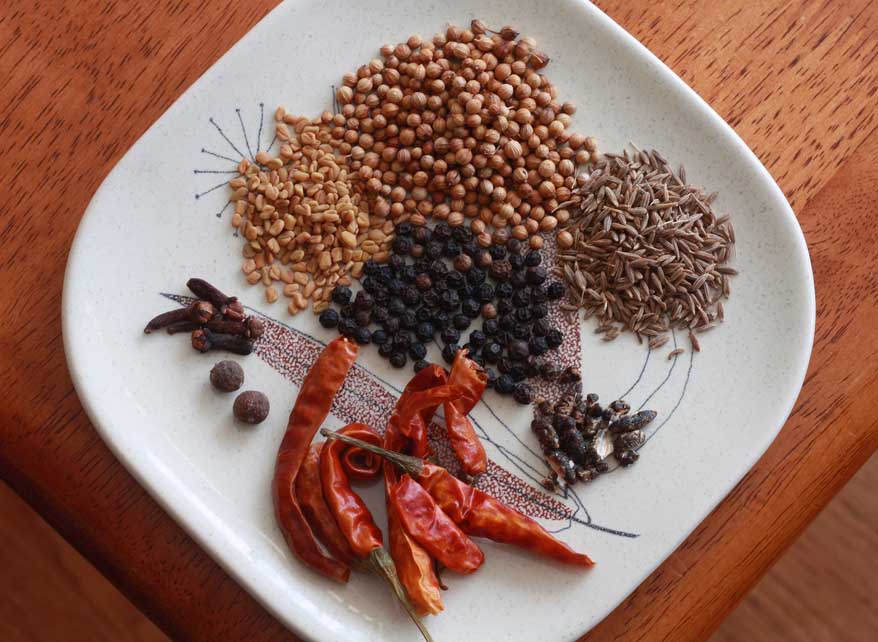
For the ground spices you will need:
- Sweet Paprika
- Ground Cinnamon
- Ground Ginger
- Ground Turmeric
- Ground Nutmeg
- Kosher Salt
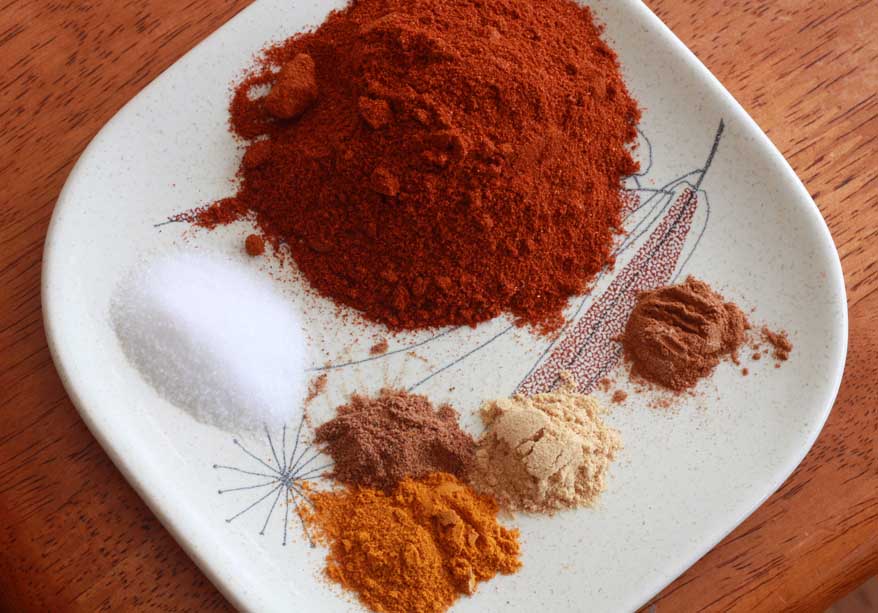
Berbere Recipe
Let’s get started!
First, we’re going to toast the whole spices and red chilies. This releases their natural oils, flavor and aroma. Heat a skillet over high heat and toast the seeds until very fragrant, about 3 minutes. Shake regularly to prevent scorching. Transfer them to a bowl to cool completely.
Note: If you aren’t afraid of extreme heat, leave the membranes and a few of the seeds in while de-seeding the chilies.
Once cooled, grind the whole spices in a spice or coffee grinder.
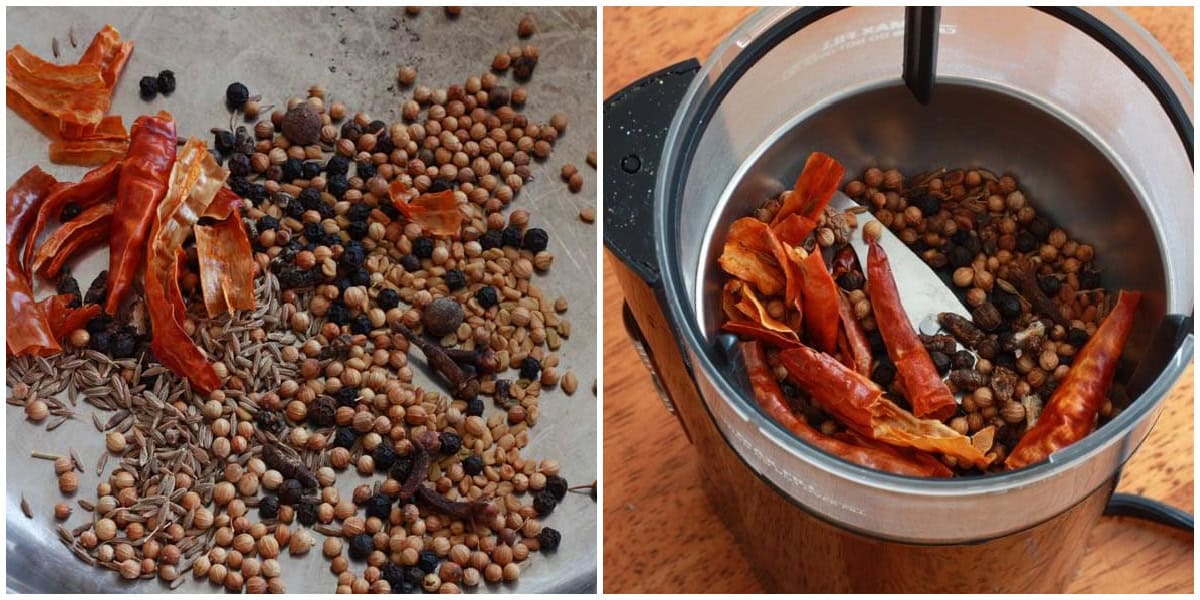
Next, add the powdered spices to the spice/coffee grinder.
Grind all the spices to a powder.
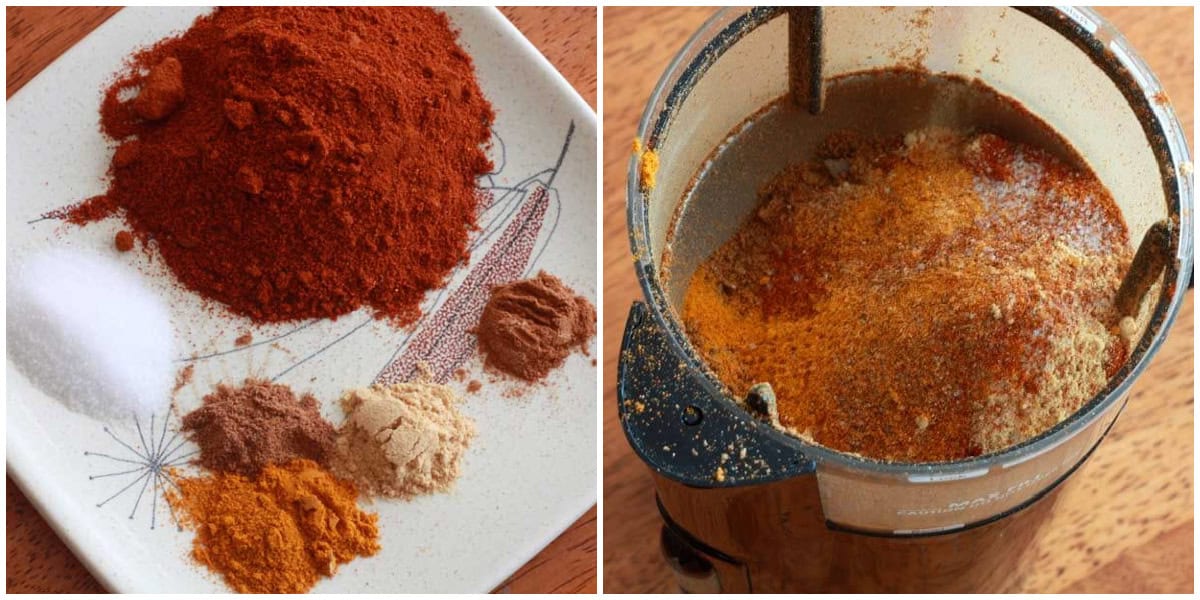
Transfer the blend to a jar with a lid.
Store the Berbere in an airtight jar in a dark, cool place until ready to use. This will keep for several months for maximum flavor use it within 3 months.
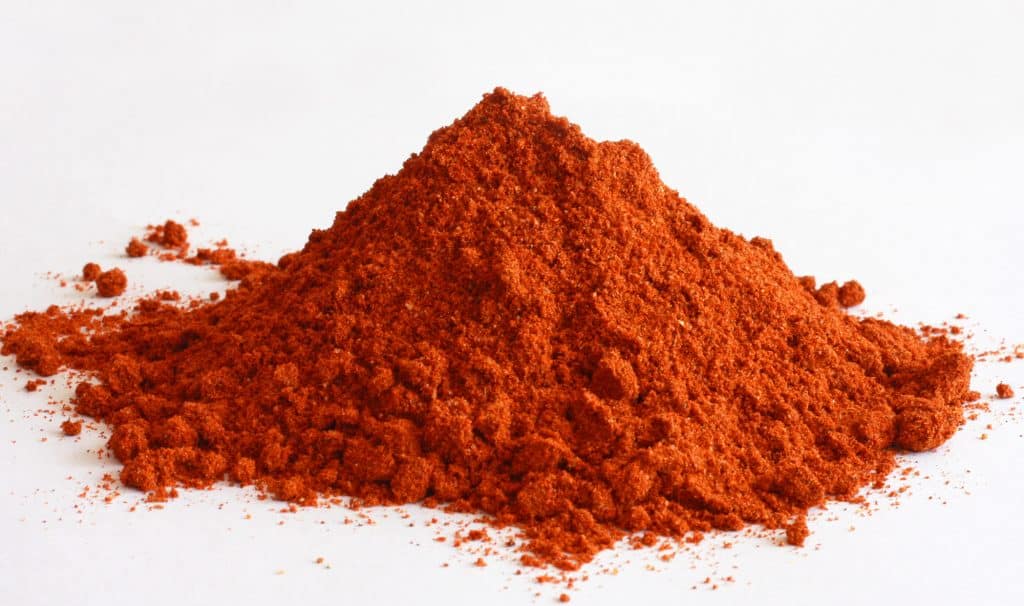
How to Use It
Berbere is a flavorful and fragrant spice blend that can be used in a variety of dishes. Remember, this seasoning blend is very potent and a little goes along way, so start with less and add as desired. Here are just a few ways you can use it:
- Stews and Curries: It’s most famously used in Ethiopian Doro Wat and Sega Wat. It can be used in a variety of stews to give them a flavor boost and some spicy kick.
- Lentils and Beans: Whether lentil or bean soups or salads, berbere really brings legumes to life. It’s classically used in Ethiopia’s famous lentil dish, Misir Wat.
- Vegetables: Just a pinch of it over roasted, grilled or steamed vegetables adds flavor and color.
- Grains: Stir into rice, quinoa or couscous to infuse them with flavor.
- Meat Rub or Marinade: Use it as a dry rub on meats, seafood or poultry before grilling, or combine it with some oil or yogurt to rub onto the meat before cooking.
- Scrambled Eggs and Avocado Toast: It adds the perfect kick and flavor.
- Compound Butter: Like Ethiopia’s famous Niter Kibbeh, Berbere can be added to melted butter and poured into a mold to make a spicy and flavorful compound butter that’s delicious on steaks, poultry, seafood, and vegetables.
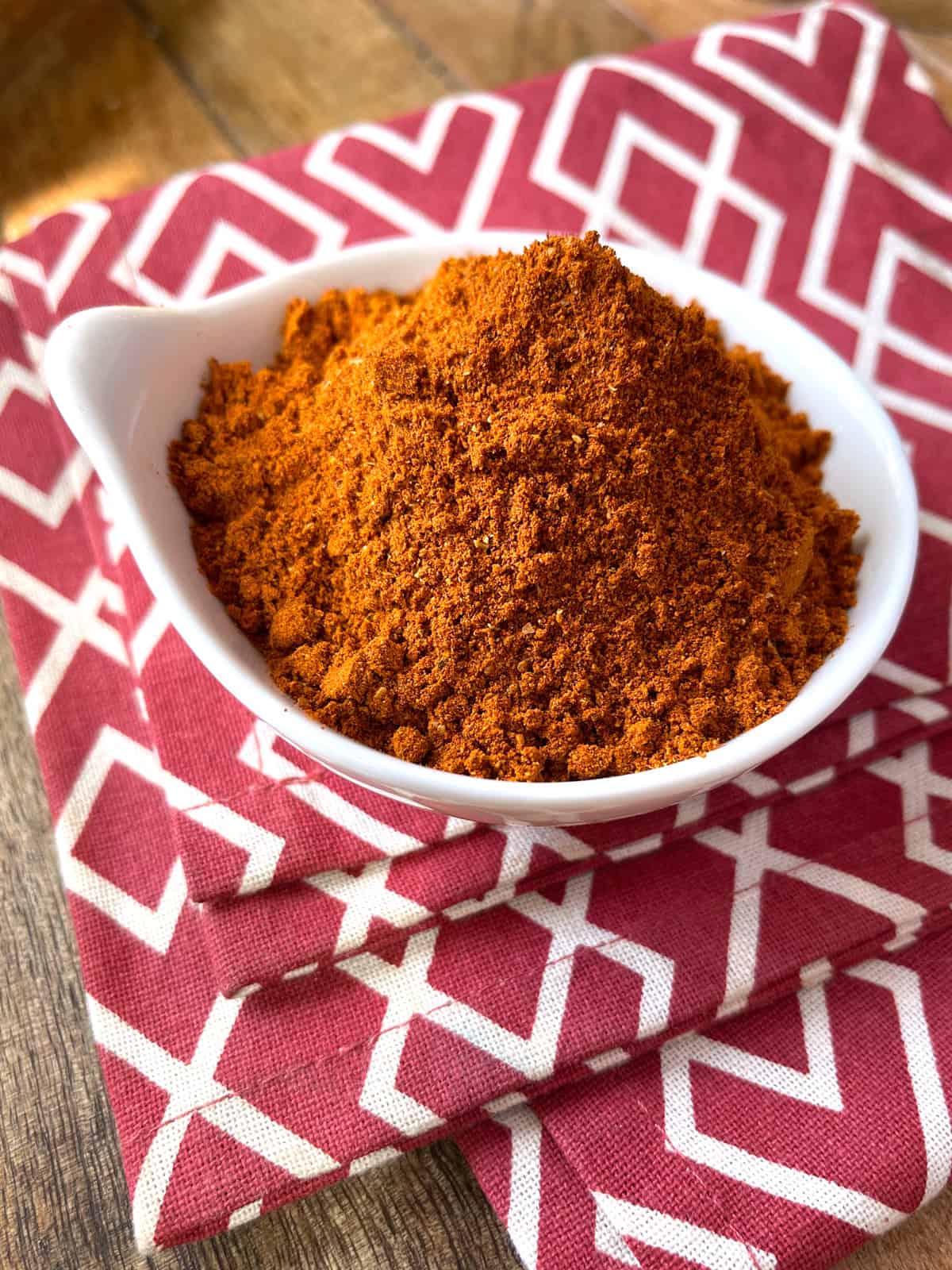
For more delicious seasoning blends from around the world to try my:
Save This Recipe
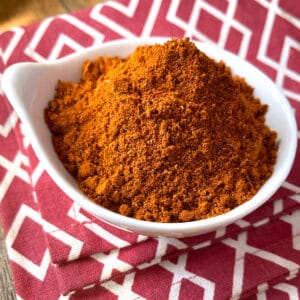
Berbere (Ethiopian Spice Blend)
Equipment
Ingredients
- 2 teaspoons coriander seeds
- 1 teaspoon cumin seeds
- 1/2 teaspoon fenugreek seeds
- 1 teaspoon black peppercorns
- 2 whole allspice berries
- Seeds of 4 green cardamom pods
- 4 cloves
- 5 dried red chilies , seeds and membranes removed and broken into small pieces (see Note)
- 3 tablespoons sweet paprika
- 1 teaspoon turmeric
- 1 teaspoon kosher or sea salt
- 1/2 teaspoon ground ginger
- 1/4 teaspoon nutmeg
- 1/4 teaspoon cinnamon
Instructions
- In a heavy skillet over high heat, toast the whole spices (seeds) and chilies, shaking the pan regularly to prevent scorching, until very fragrant, about 3 minutes. Transfer to a bowl and let cool completely.
- Grind the cooled spices in a spice or coffee grinder. Add all remaining ground spices and salt and grind everything together.Store in an airtight container in a dark, cool place. Will keep for up to 3 months.
Notes
Nutrition
Originally published on The Daring Gourmet August 26, 2013
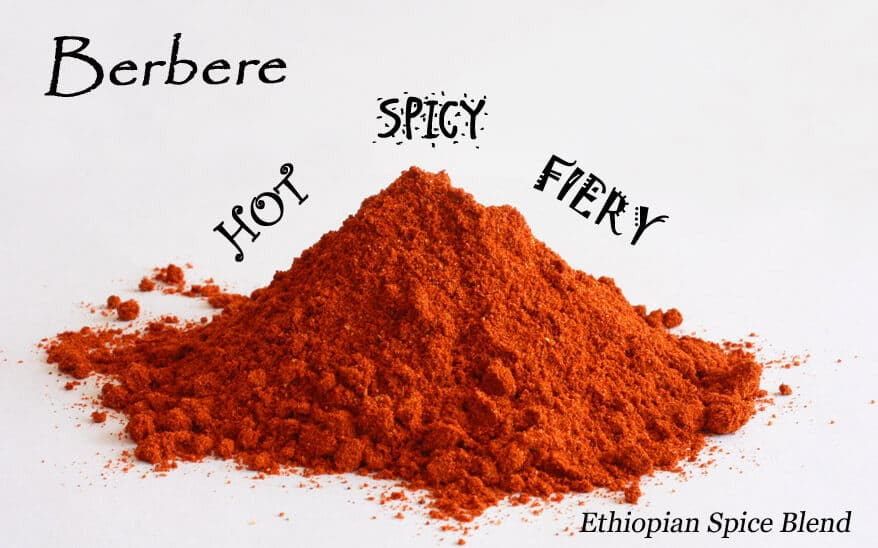



















I made this Berbere to make your Doro Wat and I have to commend you on both recipes, they are 5 stars+. Rich and flavorful, the best I’ve had. I’m making round two now and will also be trying your Sega Wat and Gomen.
I’m beyond thrilled to hear that, Dylan, thank you so much!
Excellent blend! I’ve tried several recipes as well as store-bought blends and the ratio of ingredients in this is just perfect.
Fantastic, thank you so much Nick!
I’d love to try your Misir Wat dish, but don’t do well with super spicy dishes. Would it be possible to make the Bebere seasoning with less red peppers to tone down the heat, but still get to experience the flavor of Misir Wat?
Hi Jillian, yes absolutely. I’m not a fan of excessive heat either and that’s exactly what I do. Using fewer peppers, or omitting them entirely, will have very little impact on the flavor, it will simply reduce the heat. Happy cooking!
Hello,
I have all these items (except fenugreek!) in ground, powder form. You mentioned that being okay (but not as good), but can you list what the measurements would be for already ground spices? For example, I’m not sure the quantity of “2 allspice berries” – especially once ground. I will also try to google this, but thought I would ask you first. Thank you!
I needed Berbere spice for an Ethiopian curry I was making tonight for dinner. I’m glad I found yours. It was delicious in the curry! Fortunately, I had all the ingredients and had it measured, toasted, ground and mixed fairly quickly. There was enough to make the curry dish a couple more times.
Thanks for posting the recipe. It really came in handy!
That’s wonderful, Nilha, I’m so thrilled that you enjoyed it, thank you!
I would omit the salt here because berbere is often used to season legumes like red lentils (misir wot), and salt should only be added to lentils about 3/4 of the way through.
Also, black cardamom is pretty standard in a berbere, as is an herb or two. I’ve also seen a recipe that calls for ajwain and black nigella; combining that recipe with yours made a really nice spice mix that made great misir wot (even if I made it too hot), so thanks!
It is bizarre that this is listed as a Vegetarian recipe, when it calls for chicken broth. In 40 years of cooking for people who eat Vegetarian, I have never had a single person not also avoid meat-based products like bone broths, or at the very least, acknowledge that this a departure from Vegetarian eating.
Hi Ev, I’m confused because this is a recipe for a dry spice blend. Which recipe are you referring to? Is it the Misir Wat that calls for this berbere blend? If so, you’ll note that in the list of ingredients I list both chicken broth AND vegetable broth, specifically for a vegetarian version.
Some people just look for something to gripe about. Kudos for having the patience to even reply. Looking at pictures and virtue signaling versus actually reading does not warrant the time it takes to respond. And certainly not as kindly as you did.
Hi,
I read in your “Authentic Niter Kibbeh” post that Berbere traditionally contains Koseret, Besobela and Korerima. I have access to all of these spices – in what proportions should I add these to the Berbere?
Thanks!
Hi Lewis, that’s terrific. Of those three, it’s besobela that is often included in berbere and I would aim for about 2 teaspoons of dried besobela.
Just wanted to check if whole allspice berries and allspice are the same. I can’t find whole allspice berries where I’m from.
Hi Sukriti, yes they are the same thing. 2 whole allspice berries is roughly the equivalent of 1/4 teaspoon ground allspice. Happy cooking! :)
You’re a darling! Ethiopian cooking has got to be the unsung winner in Africa, and that bebere mixture is part of why it is delicious. I’m the kind who doesn’t like to get the specific spice mixtures for a recipe, since they usually just sit there and clump up (garam marsala is an exception). Using this in a recipe will spice up any night, which I am looking forward to doing down the track.
Does the authentic Berbere mixture contain the Berbere Pepper?
Hi Mark, if you can source dried and ground Berbere peppers where you are (aka mareko fana peppers) then yes, definitely use them.